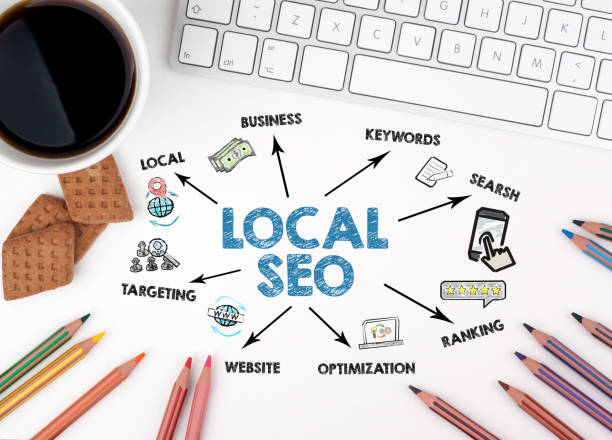5 Common Local SEO Mistakes Multi-Location Businesses Must Avoid
Introduction
In today’s digital-first world, businesses succeed or fail based on how easily customers can find them online. For companies with several branches—whether retail stores, clinics, restaurants, or service providers—general SEO strategies are often not enough. What truly makes a difference is Local SEO, a specialized method that ensures each branch shows up in the right searches.
This ultimate guide will walk you through why multi-location SEO is essential, the most effective strategies, advanced methods, and the mistakes to avoid. By the end, you’ll know how to help each of your branches stand out in local search results and capture customers right when they are ready to buy.
Why Local Search Optimization Matters for Multiple Locations
1. Visibility Where It Counts
When someone searches “pizza near me” or “dentist in New York,” they want immediate results. Local search optimization ensures your branches appear in these highly targeted searches, giving you visibility where it matters most.
2. Connecting With the Right Customers
Broad SEO brings traffic, but not always qualified leads. Location-based SEO narrows the focus to people who are actively searching in their city or neighborhood—those most likely to convert.
3. Competitive Edge
If your competitors ignore multi-location SEO, your business gains an advantage by consistently showing up in Google Maps and local listings across multiple areas.
4. Building Trust and Credibility
Accurate business listings, customer reviews, and consistent details build authority. Customers are far more likely to choose a business they see repeatedly in local searches.
5. Higher ROI
Compared to generic SEO campaigns, multi-location SEO drives measurable returns because it targets customers ready to take action near your branches.
Core Strategies for Local SEO Across Multiple Locations
1. Create Dedicated Location Pages
Each branch should have its own page. A strong local search strategy includes:
- City or neighborhood in titles and meta descriptions
- Full NAP (Name, Address, Phone Number)
- Google Maps embed for easy navigation
- Local photos, reviews, and unique content
- Clear calls to action
These dedicated pages help both search engines and users differentiate each location.
2. Optimize Google Business Profiles for Every Branch
Google Business Profile (GBP) is the foundation of local rankings. For each branch, ensure:
- Accurate NAP details
- Updated hours of operation
- Correct categories and services
- Local photos and videos
- Active review management
Updating your GBP regularly builds trust signals and improves visibility.

3. Use Location-Specific Keywords
Generic keywords won’t cut it. Instead, combine services with locations, such as:
- “Best gym in Chicago”
- “Italian restaurant in Brooklyn”
- “Plumbing service in Dallas”
These long-tail phrases make your branches more discoverable and directly support location-based SEO.
4. Keep NAP Consistent Across the Web
Search engines cross-check your business information. Inconsistent details—like different phone numbers or slightly altered addresses—hurt your local SEO performance. Make sure your NAP is identical across websites, directories, and social platforms.
5. Implement Local Schema Markup
Schema markup tells search engines more about your business. Adding structured data for each branch boosts multi-location SEO by:
- Highlighting multiple addresses
- Improving rich snippets
- Supporting voice search queries
6. Encourage Reviews for Each Branch
Reviews are powerful signals in local search optimization. Encourage happy customers to share feedback on Google, Yelp, and industry directories. Always respond to reviews—both positive and negative—to show engagement.
7. Develop Localized Content
Content should speak to each community you serve. Ideas include:
- City-specific guides and tips
- Blog posts about local events or sponsorships
- FAQs related to services in that area
Localized content strengthens location-based SEO and creates deeper connections with customers.
8. Build Local Backlinks
Links from community websites, local blogs, and digital newspapers increase authority for each branch. These local backlinks are an underrated but powerful factor in improving local rankings.
Advanced Tactics for Multi-Location SEO
- Geo-Targeted Ads – Pair organic local SEO with paid ads that focus on city-level targeting for maximum impact.
- Voice Search Optimization – Optimize for conversational queries like “Where is the nearest dentist open now?”
- Mobile-First Design – Since most searches happen on mobile, ensure your site loads quickly and displays smoothly.
- Localized Social Media – Create posts specific to each city or neighborhood. Tag local events, landmarks, and communities.
Common Mistakes in Local SEO for Multiple Locations
- Duplicate Content: Copy-pasting the same text across all location pages harms your rankings. Customize content for each branch.
- Ignoring Reviews: Not managing feedback weakens trust signals and lowers visibility.
- Inconsistent NAP: Discrepancies across directories confuse search engines and customers.
- Poor Mobile Experience: If your site isn’t mobile-friendly, you’ll lose a large portion of your local audience.
- Keyword Stuffing: Overusing “Local SEO” or similar phrases makes content unreadable and can hurt rankings.
Measuring the Success of Local SEO
Track the performance of your multi-location SEO with these tools:
- Google Analytics – Monitor traffic by location
- Google Search Console – Track keyword performance and visibility
- GBP Insights – Review calls, clicks, and visits
- Rank Tracking Tools – Measure position by city or branch
These metrics show whether your strategy is delivering results or needs adjustment.

5 FAQs on Local SEO for Multiple Locations
Q1. What is Local SEO and why is it important?
Local SEO is the process of optimizing a business to appear in city or neighborhood-based searches. It improves online visibility and attracts nearby customers.
Q2. How does Local SEO benefit businesses with multiple branches?
It ensures each branch ranks separately, helping customers find the nearest location with ease.
Q3. What are the best strategies for multi-location SEO?
Dedicated location pages, optimized Google Business Profiles, consistent NAP, and local backlinks are essential.
Q4. How do reviews impact local rankings?
Positive reviews build trust, influence search results, and drive more customers to your branch.
Q5. How long before results show up?
Most businesses notice measurable improvements in 3–6 months with consistent local search optimization.
Conclusion
For businesses with multiple branches, local SEO is no longer optional—it’s critical for growth. From creating dedicated pages to managing Google Business Profiles, building local backlinks, and encouraging reviews, every step brings your branches closer to dominating city-level search results.
When done right, multi-location SEO not only boosts visibility but also builds trust, drives conversions, and strengthens your reputation in every community you serve. Investing in location-based SEO today means long-term success for tomorrow.





